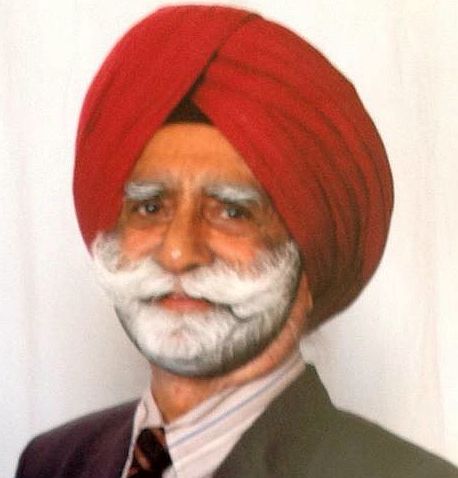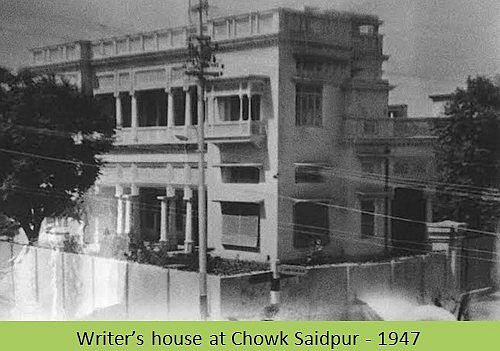Latest Contributions
Read More Contributions
Pindi Memoirs by a Sikh Son of the Soil -1
Category:
Tags:

Kanwarjit Singh Malik was born in Rawalpindi in 1930. His family moved to India at the time of Partition in 1947. He joined the Flying Club in Jalandhar, and was later selected by the Indian Air Force. After the retirement from the Air Force, he served as a senior captain in Air India and Air Lanka.
Editor's note: This is a slightly edited version of an article that originally appeared at http://nativepakistan.com/pindi-memoirs-by-a-sikh-son-of-the-soil-part-1-rawalpindi-blog/, and is reproduced here with the author's permission. Part 2 is available here.
I have recently read 19 episodes of "My Old but Ever New Pindi", a series of "Nostalgic Articles about Rawalpindi" written by Rafique Khan Sahib, in the website Native Pakistan. Being a native of Pindi, these articles took me back to the good old days. Today, sitting in Foster City, near San Francisco, USA, at the home of my daughter, I remember Pindi as it was in my mind as I remember.
In Rawalpindi, our Malik family was very well-known, especially my father Malik Mukhbain Singh. He had many Muslim friends, Mian Aslam and Mian Akram (Lakri taal walas, sellers of teak and other wood), Choudhry Maula Dad and all his brothers, and their father/uncle M. Azam Khan who was a member of the Cantonment Board.
My father himself was a member of the Municipal Committee, and Director Rawalpindi Electric Supply Bus Company, which plied in the city. Malik Qayum Sahib of Shamsabad, Sir Sikandar Hayat Khan, Nawab Muzaffar Khan, and all the elders were his personal friends.
In 1948, Mian M. Nurullah, Pakistan Punjab's first Finance Minister, especially came to stay with my father in Jalandhar, instead of staying with Pakistan's representative. The Minister was accompanied by Nawab Muzzafar Khan. I served them myself.
There were so many others whom I don't remember now because as children we were not allowed to sit in the gathering.
I was born on 7 November 1930 in one of my great-grandfather's houses on Nehru Road (now Jinnah Road). This house was converted as living quarters for my grandfather Malik Chaiber Singh.
Ours was a joint family. Most of the property on the opposite side was owned by my great-grandfather, Malik Khazan Singh, who lived in Old Pindi, Saidpuri Darwaza, Chatti Hui Gali. The property was known by our Baradri as Wada Ghar.
My great-grandfather was born in 1813. He moved from Dera Khalsa (Tehsil Kahuta) to Rawalpindi sometime between 1833 to 1838, when he was 20 to 25 years old. His mother sent him to Pindi with Rs. 25. He served in the Army of Maharaja Ranjit Singh, and moved with them up to Kabul. Later, like so many other Pindiwalas, he became a general contractor. There were many contractors traveling with Sikh and British Armies up to Kabul. Malik Khazan Singh was one of them. They all made good money and bought Property in Pindi. They set up their own business and also became involved in Philanthropy like Sardar Sujan Singh.
He had the monopoly of Dak (postal mail) of Pindi District. His Tongas and Victorias used to go up to Murree. These horses were put up in the Old House, which was later converted as living quarters. He passed away in 1899.

His son Malik Chaiber Singh, my grandfather, lived with the joint family in the Old House. Later, my grandfather moved with his younger sons to his bungalow on Circular Road. It was the biggest bungalow, over three acres, in Pindi city. It was opposite L. Kalyan Das Haveli, Gali Surian.
We are Ahluwalia Sikhs. Malik was the title bestowed on our ancestors with village Dera Khalsa as Jagir by Gakhar Rajas, who were the nominated Governors of retreating Muslim invaders on their way back to Central Asia or Afghanistan.
My father's youngest uncle, Malik Dogar Singh, lived in opposite us in a palatial bungalow. On the left of our house lived Bakhshi Jagan Nath\; in front of his house he had some fruit trees. He enjoyed sitting there. On our right was Sarai Sardaran Di\; this was a vast sarai (resting place for travellers), with a maidan (field) in the centre and big rooms. The travellers could stay free of any charge. There was a water tap in the centre for animals. One S Sant Singh used to manage it.
Then there was a small road leading to the bungalow of Mrs. Hardit Singh. She was mother of Sardar Sohan Singh and Mohan Singh. From the bungalow of Mrs. Hardit Singh, I used to notice Chinese looking caravan travellers. They were actually merchants from Afghanistan and other parts of Central Asia with their horses and yaks. My mother used to buy carpets from them. When we moved to our bungalow at Chowk Saidpur Road, she had 23 carpets of all sizes. She also bought one Samuri (very large coat made of so many very fine animal skins) for my father, but he never wore that. It used to fill one large box.
Next was a Gurdwara and Mandir built by Sardar Sujan Singh, father of Sardar Hardit Singh. Next was the Sardaran Da Bagh (Garden of Sikhs).

Historical Gharyal (clock tower) in Bagh Sardaran, Rawalpindi.
The Bagh had big gates on both sides. There were about six acres of trees of all types and flowers, a big gharyal (clock tower), library, and a huge bungalow of Sardar Sohan Singh (known as Shahzada Kothi).
I visited the Shahzada Kothi many times with my father, as he was a good friend of Sardar Sohan Singh.
Sardar Mohan Singh lived in Cantonment in the best bungalow of Pindi. That Victorian style bungalow became the Pakistan President's home around the mid 1960's. Later, Fatima Jinnah Women University, the first Woman University of Pakistan, was established in the premises of this bungalow on August 6, 1998.

The land opposite Sardaran Da Bagh also belonged to my great-grandfather, so it became part of the property of his youngest son, who built that imposing only bungalow on Nehru Road. All land behind and the road going to Mohalla Akal Garh belonged to him.
There were so many small shops, selling pakoras, rations, even Guddas (Kites) and Halwai shops. The small houses/shops were paying rent of Rs 15-20 per month. At the back, there were many Kumhars (pottery makers), all on rent of Rs. 10-15 per month.
Nearby was the Normal (yes, that was its name) School for Girls. Even I was there in 1934, as a special case, may be for 10 or 15 days. I used to play with Nayar Sultana, daughter of then Head Mistress. I have only a faint memory of my stay in that girls' school.
After this school was Deere Mander Baba Sarab Dyal, then a gap with some houses, and wild growth. Further on was the Cremation Ground, and the Lei Stream (now called Lei Nullah). I believe Pir Wadhai and Pir of Golra then owned most of the land on other side of Lei, which divided the city from Cantonment. We were not allowed to go anywhere without servants till Partition.
Sardaran Da Bagh was between two roads. A little after the Bagh, the road branched to the right, called Asghar Mall Road. Malik Harnam Singh's bungalow was located on this road. We used to call that bungalow as Barood Khane Wali Kothi Chacha Ji Di. It was so named because Barood Khana means ‘Gunpowder Place', and the house was close to the only Crackers Factory in Pindi. We watched Dussehra from there. The very big ground was known as Dussehra Ground. Opposite this Ground was TB Hospital, with another very vast ground.
In 1936/37, we shifted from our Nehru Road house to our newly built bungalow at Chowk Saidpur Road. It was located at the cross road of Saidpur Road and /Asghar Mall Road. Our bungalow was a landmark, along with Saran Sardar Boota Singh, our close relation.

I studied in Presentation Convent School in Cantonment, Singh Sabha School in Raja Bazar, Khalsa School near Bani Mai Veeran on Saidpur Road, and finally up to 10th class Khalsa High School (now Muslim High School) near our bungalow.
Sanatan Da School had an imposing building. Mai Veeran was Sain Sahib's widow. Pindi had no large pond. So, in her husband's memory, she built a very large brick lined pond with steps, near Said Puri Darwaza on now Jamia Masjid Road. All communities took part in this holy cause.
Asghar Mall Road extended up to Murree Road. On the way was a bungalow of Sardar Hari Singh and three or four other bungalows, rest were all Mohallas including Kartar Pura on a road which joined Bani Mai Veeran. The land behind the Jamia Masjid, the most imposing mosque in Rawalpindi Division, belonged to Sardar Sujan Singh, grandfather of Sardar Sohan Singh. On the other road leading to Pull (bridge) Shah Nazar on Jamia Masjid Road lived Bakshi Shiv Ram in a very nice house. He had a very beautiful Tonga, and used to come visiting my father in that Tonga plying himself.
Uncle Harnam Singh owned Lakshmi Cinema, while Rose Cinema was owned by Peshoria Sardar Swaran Singh, whose son Gurdip was my brother's class fellow in Khalsa High School.
Go to Part 2.
______________________________________
© Kanwarjit SIngh Malik 2015
Comments
Add new comment